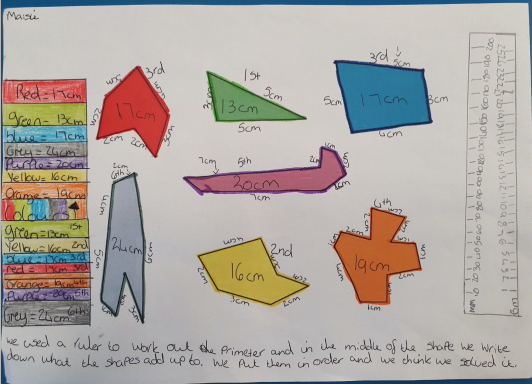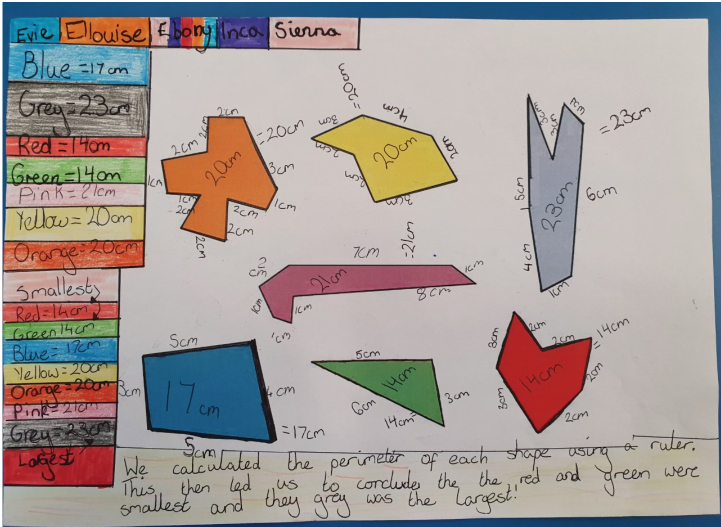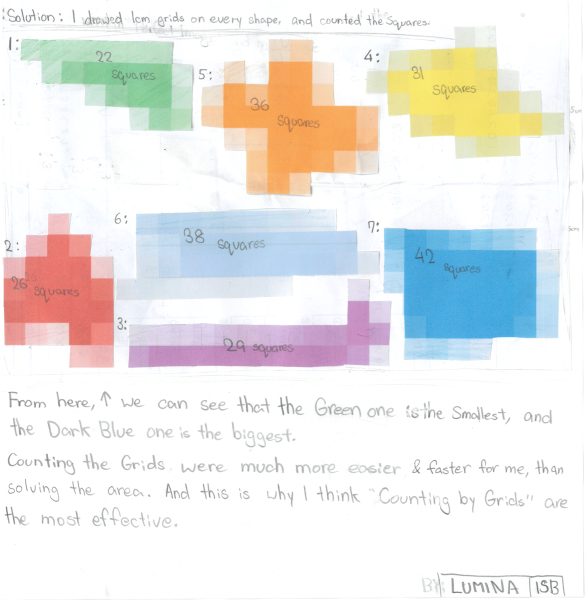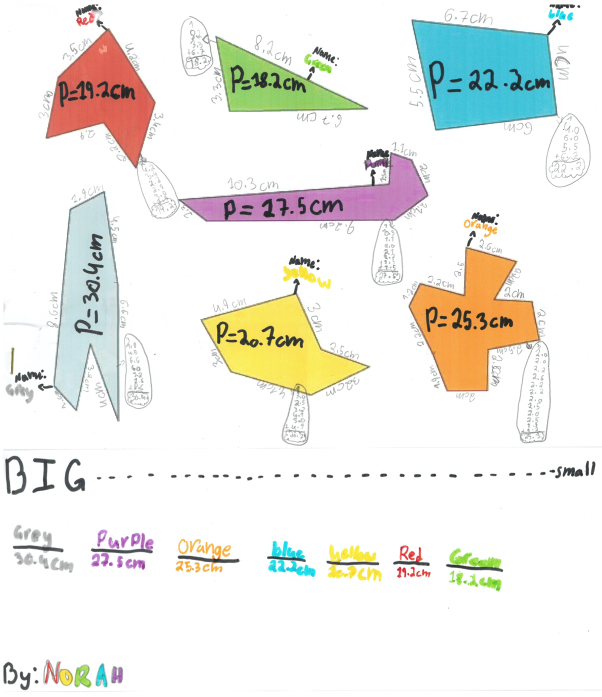Or search by topic
Number and algebra
Geometry and measure
Probability and statistics
Working mathematically
Advanced mathematics
For younger learners
Sizing Them Up



- Problem
- Getting Started
- Student Solutions
- Teachers' Resources
Juliet from Halstead Prep School wrote:
I printed the shapes and traced them on squared paper. Then I counted the squares inside each shape. I counted half and whole squares. I found two 16s and arranged them in order from 11 to 20. Please see the picture:

Luay from Goldsworth Primary School sent the following:
1. I printed out the shapes and cut them.
2. I drew the shape on a square grid paper by placing the cut-out shape on it and drawing around it.
3. I put dots in each square inside the shapes so I could count them.
4. I wrote down the total counts of each shape.
5. Finally, I arranged the numbers in order starting from lowest to highest. Lowest number means smallest in size and highest number means the largest in size. I have attached a picture for reference:

We had three submissions from Lutton St. Nicholas:
Maisie
We used a ruler to work out the perimeter and in the middle of the shape wrote down the total in the middle.
Then we put them in order from smallest to largest.
 

Evie, Ellouise, Ebony, Inca, Sienna
We calculated the perimeter of each shape using a ruler. This then led us to conclude the red and green were smallest, and the grey was the largest.


Kacey, William, Mikey
We traced the shapes on a squared piece of paper and counted the squares to find the area. Then we ordered them from smallest to largest.
We had the following pictures of solutions from The International School of Brussels:



Thank you for these. I wonder if there are any other ways of assessing their sizes...
Related Collections
You may also like
Biscuit Decorations
Andrew decorated 20 biscuits to take to a party. He lined them up and put icing on every second biscuit and different decorations on other biscuits. How many biscuits weren't decorated?

